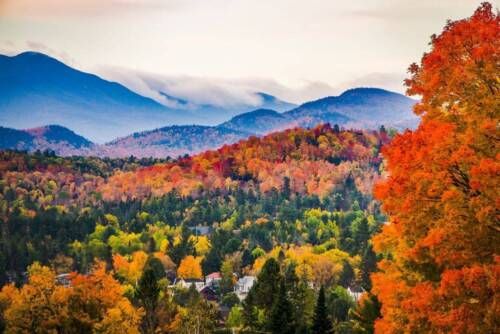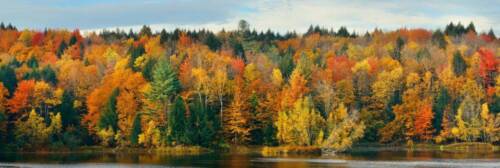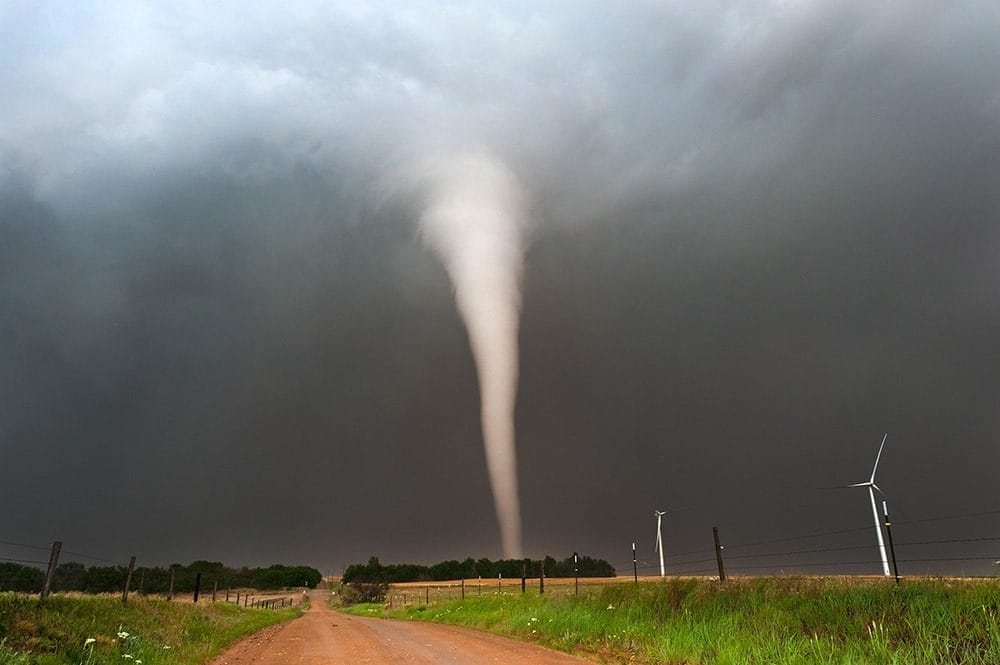The Changing Colors of North America’s Fall Foliage
This past Saturday, September 23rd, was the first day of astronomical fall in North America. Fall is marked by many things including days growing shorter, schools back in session, the return of the American football season, and most notably, the changing leaves. The display of red, orange, and yellow leaves is a phenomenon that transforms many locations into breathtaking tapestries of vibrant colors. In honor of the fall equinox, we’ll explore North America’s fall season, delve into the science behind why leaves change color, understand the factors that influence the timing and vibrancy of this transformation, and examine the impact of new climate norms on this cherished natural spectacle.
The Fall Season in North America
The fall season, also known as autumn, is one of the four distinct seasons experienced in North America. It typically begins in late September and extends through December. This season is marked by cooler temperatures, shorter daylight hours, and, most notably, the gradual change in the color of deciduous trees’ leaves. Fall’s onset, look and feel may vary depending on your location in North America.

Why Do Leaves Change During Fall?
The stunning transformation of leaves from green to an array of vibrant colors is a result of complex biological processes within the trees. During the spring and summer, leaves are green due to the presence of chlorophyll, a pigment responsible for photosynthesis. As daylight diminishes and temperatures drop in the fall, trees receive signals to prepare for the winter ahead.

In response to these cues, trees begin to reabsorb nutrients and water from their leaves, causing a decrease in chlorophyll production. As the chlorophyll breaks down and fades away, other pigments within the leaves become more prominent. Carotenoids, responsible for yellow and orange hues, are already present in the leaves but masked by the dominant chlorophyll. Anthocyanins, responsible for red and purple hues, are produced in response to sunlight and cool temperatures. The varying combinations and concentrations of these pigments create the kaleidoscope of colors we associate with autumn.
The Timing and Vibrancy of the Changing Leaves
When the leaves begin to change and how deep their colors appear depend on several factors.
Different tree species have varying pigmentation and responses to environmental cues, affecting the intensity and timing of color changes. Likewise, temperature and moisture play a crucial role. For example, a warm, wet summer followed by a cool, dry autumn tends to produce more vivid fall colors. Healthy trees tend to produce more vibrant foliage. Stressors like disease or drought can lead to duller colors.
Geography has a significant impact. Different regions experience fall at different times due to their latitudinal and elevational variations. Northern areas typically witness earlier, and more vibrant displays compared to southern regions. Since the decreasing daylight hours trigger the change in leaves, regions with shorter days experience earlier color transformations.
Specifically, How Are Changes in our Atmosphere Impacting Fall Foliage?
Our changing atmosphere is altering the dynamics of fall leaves in North America. Rising temperatures and shifting weather patterns can have several impacts on North America’s fall foliage.
Extended Growing Seasons
Rising temperatures associated with climate change can lead to longer warm periods, delaying the onset of fall. This means that in some areas, the transition from summer to fall may be less abrupt, and the fall season may start later than historically observed.
Altered Coloration
The vibrancy and diversity of fall foliage colors may be affected. High temperatures and drought conditions can lead to the reduction of anthocyanin production, which is responsible for red and purple hues in leaves. This could result in a shift toward more yellow and orange colors and less vivid reds and purples.
Changes in Leaf Timing
The timing of the fall leaf change could become less predictable. As temperatures patterns shift due to climate change, the signals that trigger trees to shed their leaves may be disrupted. This could lead to variations in when and how leaves change color, potentially impacting the annual spectacle of fall foliage.
Species Distribution Changes
Climate change may alter the distribution of tree species. Some species may move to different regions or altitudes to find suitable climatic conditions, which could change the composition of forests and the types of trees contributing to fall foliage displays.
It’s Important to Understand all the Impacts of the New Norms in Weather
North America’s fall season is as beautiful as it is fascinating. Understanding the science behind the changing leaves, as well as the influence of our changing atmosphere, allows us to appreciate this phenomenon more deeply. While new climate norms pose challenges to the future of fall foliage, they also underscore the importance of having accurate weather data to understand the extent of the impacts on more than just leaves. If you would like to know more about the new norms in weather, read our blog post The Surge in Extreme Weather: Unveiling the New Norms and contact us to learn how Climavision’s advancements in weather technology can help you.




